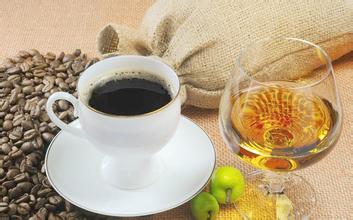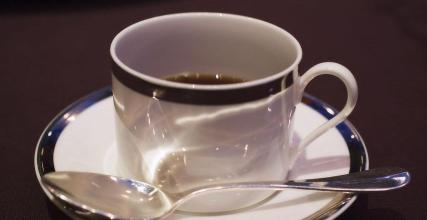Introduction to the blending of fine coffee introduction to the proportion and types of coffee blending
In the field of boutique coffee, great efforts have been made to test and study the varieties, harvest and treatment methods of coffee. Tim, for example, has spent a long time working with farmers to experiment with different ways of harvesting and handling coffee. In addition, boutique coffee shops respect coffee farmers and take the initiative to raise the purchase price of good coffee, hoping that farmers can have the enthusiasm to produce better quality coffee beans to achieve sustainable development and win-win situation. There are more and more good coffee, and the taste of fine coffee is getting better and better. And single manor, single tree coffee also has a rich and balanced aroma and taste. It is obviously a pity to continue to use these characteristic coffee beans to make mixed coffee.
To make a coffee mix, even if it is seasonally made (usually in about 3 months, the coffee shop will change the mix), it is hard to avoid that the aroma and taste of the mix will not be as good as when it was first launched. This is because the overall quality of raw coffee beans will decline with preservation, but the rate of decline is different for different coffee beans. For example, if a coffee with three estates is used in a blend, it is very likely that the quality of beans in one estate will decline a lot from the second month, but the other two beans are likely to be able to maintain a high level for 5 months without obvious taste change, but due to the poor quality of one of the coffee beans, this blend can no longer be used. Using single-product beans can avoid this problem very well. if the beans are not easy to preserve and the quality declines rapidly, the coffee shop can buy less, enough for 1-2 months to adjust the taste. And those beans that are easy to preserve can go in a little more and get a price advantage, which is good for both coffee shops and consumers. Two days ago, I was still considering whether the blending would disappear in the category of boutique coffee. Today, I saw that Tim Wendelboe announced that it would only provide single concentrate instead of espresso blending in the future. Since James Hoffmann won the WBC championship by virtue of individual beans in 2007, people began to pay attention to SO. In fact, it has been 5 years, and it is time for accumulation to break out.
In the traditional business field, the main purpose of mixing coffee beans from different places is to achieve a balanced taste and uniform taste, and to reduce costs. When the boutique coffee shops represented by the third wave began to notice that the shelf life of raw coffee beans was not as long as previously known (1-2 years), they put forward stricter requirements, which led to the concept of "seasonal blending". Due to the different harvest seasons of coffee in different coffee producing countries around the world, fresh coffee beans from different producing areas can actually be bought all the year round. Select the best mix of coffee beans available in the season and spell out a formula suitable for espresso. As a result, the taste of coffee that guests may drink in different seasons varies slightly. For example, in summer you can drink an espresso with strawberry and pineapple aromas, while in winter you may get rubber muffin cake or taffy. Coffee is a product of nature, and it is impossible to stay the same as industrial products. Being able to drink such colorful coffee should be the charm of coffee.

Important Notice :
前街咖啡 FrontStreet Coffee has moved to new addredd:
FrontStreet Coffee Address: 315,Donghua East Road,GuangZhou
Tel:020 38364473
- Prev

The most commercialized blended Coffee can be mixed with individual Coffee
Although each kind of beans has its own characteristics, what is special about espresso is that you can drink a lot of flavor beans in a cup of coffee, which is more fragrant than concentrated coffee. I like espresso very much, but Blue Mountain Coffee can also be mixed. If you like Blue Mountain Columby,
- Next

Does blended coffee have high requirements for taste and flavor? introduction to the characteristics of fine coffee
Mix it with the type of coffee. Such a blending method requires an accurate understanding of the type of coffee beans used, and a fairly familiar grasp of the performance of each kind of coffee in the cup, so as to determine the large proportion of all kinds of coffee beans in the blending.
Related
- Does Rose Summer choose Blue, Green or Red? Detailed explanation of Rose Summer Coffee plots and Classification in Panamanian Jade Manor
- What is the difference between the origin, producing area, processing plant, cooperative and manor of coffee beans?
- How fine does the espresso powder fit? how to grind the espresso?
- Sca coffee roasting degree color card coffee roasting degree 8 roasting color values what do you mean?
- The practice of lattes: how to make lattes at home
- Introduction to Indonesian Fine Coffee beans-- Java Coffee producing area of Indonesian Arabica Coffee
- How much will the flavor of light and medium roasted rose summer be expressed? What baking level is rose summer suitable for?
- Introduction to the characteristics of washing, sun-drying or wet-planing coffee commonly used in Mantenin, Indonesia
- Price characteristics of Arabica Coffee Bean Starbucks introduction to Manning Coffee Bean Taste producing area Variety Manor
- What is the authentic Yega flavor? What are the flavor characteristics of the really excellent Yejasuffi coffee beans?

